|
|
|
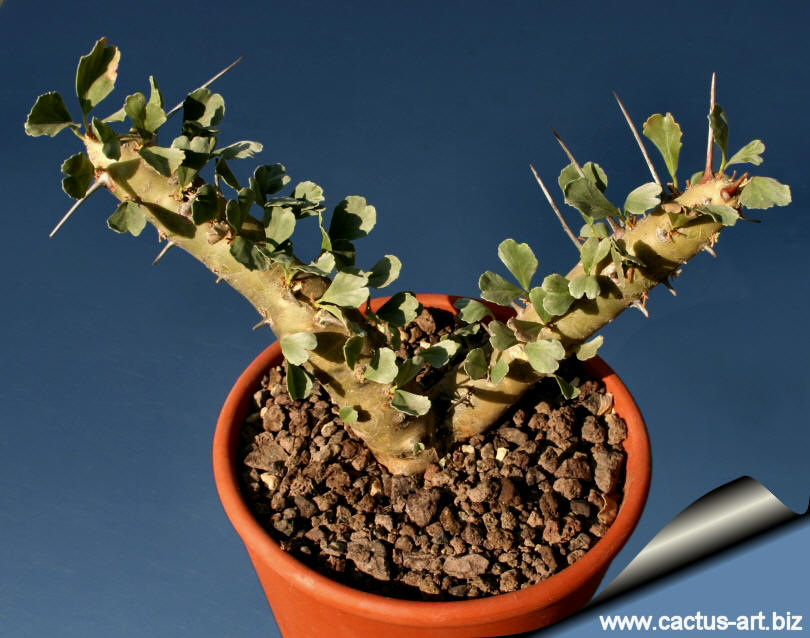
Sarcocaulon crassicaule is a beautiful bonsai type species
with chunky sparsely spined
stems and one the most unusual and interestingly members of the
Geraniaceae family.
It has large spines and white or yellow flowers.
|
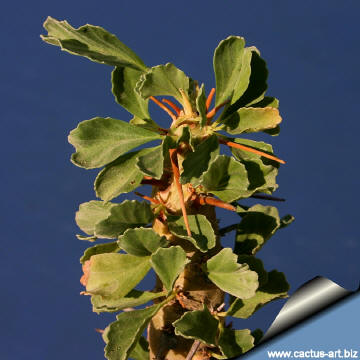 |
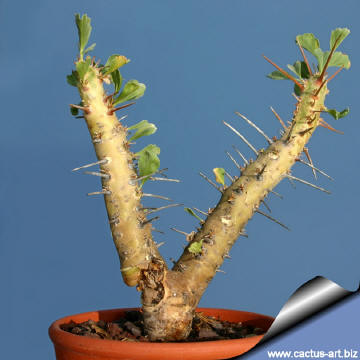 |
|
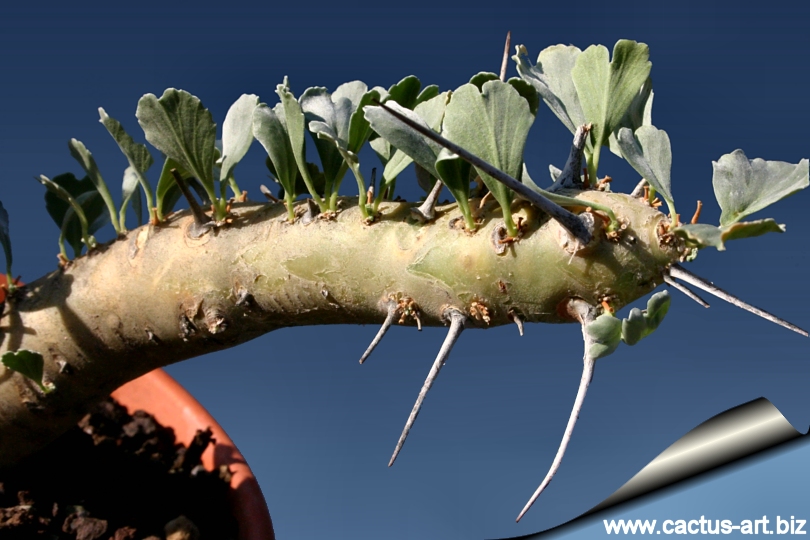
|
|


Advertising
|
|
|
|
|
Family: Geraniaceae
Scientific name:
Sarcocaulon crassicaule Rehm. 1935
Origin: western South Africa (Cape Province) to the
southwestern half of Namibia
Habitat: Widely distributed and commonly
found in winter rainfall regions where dry climatic conditions prevail,
they are found mostly on low stony ridges, rocky hillsides or
mountainsides, gravel, outcrops of weathered quartzite and red dune
sands. In the winter months it may experience mild to severe frosts.
Conservation status: Listed in
CITES appendix 2.
Common Names include: Bushman Candle, Groot Kersbos
They are commonly called bushmans
candles due to the translucent flammable wax coating covering the stems
of these plants so they will burn even when stems are not dry. The thick
waxy layer protects it from moisture loss as well as damage from
wind-blown sand allowing the plants to withstand the harsh extremes of
climate found in the western parts of S. Africa and Namibia. The waxy
coating over time polishes the stems a golden-brown colour.
Etymology: The name Sarcocaulon alludes to
the Greek words for fleshy, sarkos, and stems, caulon.
Synonyms:
- Sarcocaulon burmannii
- Monsonia crassicaule (Rhem) F.
Albers
Published in: SAJB 62(6) 346, 1996
|
Description: It is a
succulent shrublet that can be up to 30(-50) cm high and wide with short
spiny stems, branching just above soil level.
Stem: Branches up to 2 cm (usually >1 cm Ø) in diameter, grey or
greyish-yellow fleshy, prostrate, semi-erect or erect, covered with
waxy, translucent bark.
Root: Not swollen.
Leaves: Unsegmented ovate to obovate, olive green and covered
with hairs with long and short petioles; Long-petioled (10-) 15(-19) x
(8-) 10 (-16) mm. Short-petioled (6-) 15(-25) x (4-) 9 (14) mm, Lamina
irregularly pinnatilobate, crenate or dentate.
Spines: The stem is covered with thick, straight or slightly
recurved, greyish spines (spiny leafbases).
Flower: Delicate tissue paper like sulphur, light cream or white,
2,5-3(- 5,5) cm Ø, Sepals: glabrous, puberulous or pilose, Petals:
generally > 2 cm
Blooming season: Spring.
|
|
|
|
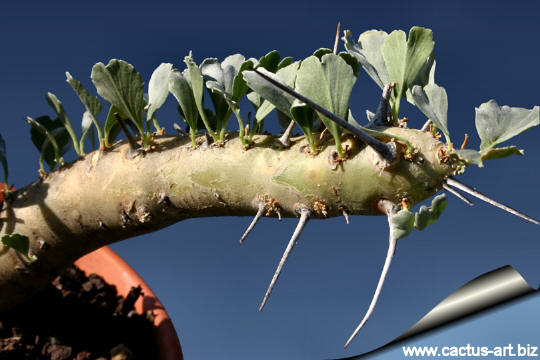
|
|
Remarks: Dimorphic (two forms) leaves
characterize the genus, with the blades either long or shortly petioled.
The long petioles occur singly and remain as blunt or sharp spines, the
short ones occur singly or in groups of 2–7 in the axils of the long
spines as blunt stalks.
Cultivation: Waterings from early early spring to fall at a minimum temperature of +14° C. Keep
dry d winter, at a minimum temperature of +8° C. Protect from frost.
S. crassicaule in cultivation is usually overwatered and over-fertilized Correctly grown this is a beautiful, compact and
dense plant. Do best with a mix that has almost no organic material at
all. Perlite can be substituted for pumice but it tends to rise to the
surface of the mixture.
Heat Tolerance: Light shade or morning sun in summer. Sun Exposure:
Light shade
Reproduction: There are two main ways to propagate members of the
genus Sarcocaulon: Seeds or cuttings. Cuttings often have
problems developing a good root structure.
|
|